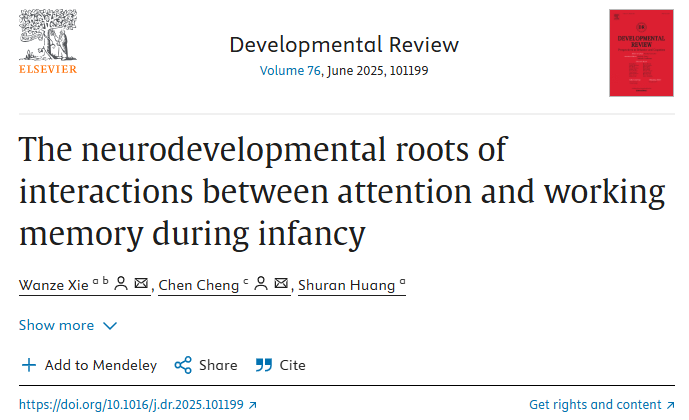Developmental Review | Dr. Wanze Xie: The neurodevelopmental roots of interactions between attention and working memory during infancy

Abstract
Understanding the interaction between attention and working memory (WM) is crucial in cognitive neuroscience, extensively studied in adults but less explored in infancy. This review examines the developmental roots and relationship between attention and WM in infants from a developmental cognitive neuroscience perspective. By integrating theories and recent empirical findings from research on adults and infants, we aim to revisit how this relationship emerges and manifests early in life through two perspectives. First, we propose that the maturation and collaboration of the autonomic nervous system (ANS) and central nervous system (CNS) provide the foundational basis for attention and WM in infancy. This foundation is evident in shared neural substrates such as the prefrontal cortex (PFC) and parietal regions, as well as in cortical modulation driven by physiological activities like cardiac dynamics and pupil dilation. Second, we explore potential mechanisms influencing infants’ WM limitations, integrating insights from selective attention, PFC maturation, and the role of prior experiences within the predictive coding framework. This comprehensive approach elucidates the interplay between attention and WM in infancy, highlighting their collective contribution to infants’ adaptive strategies, i.e., exploration over exploitation, in interactions with the environment.
Original link: https://doi.org/10.1016/j.dr.2025.101199